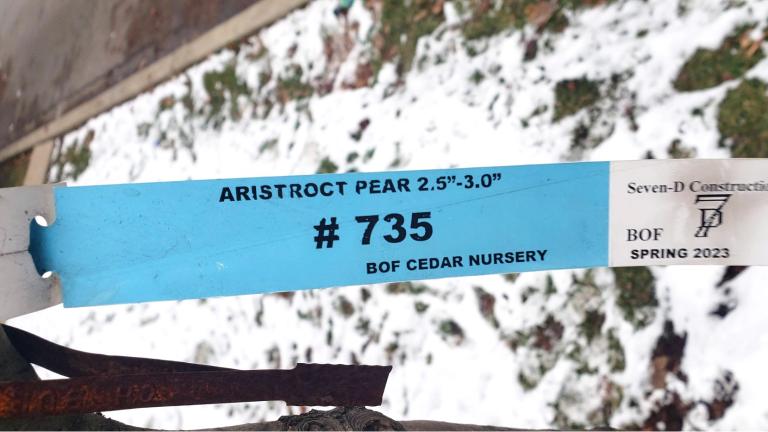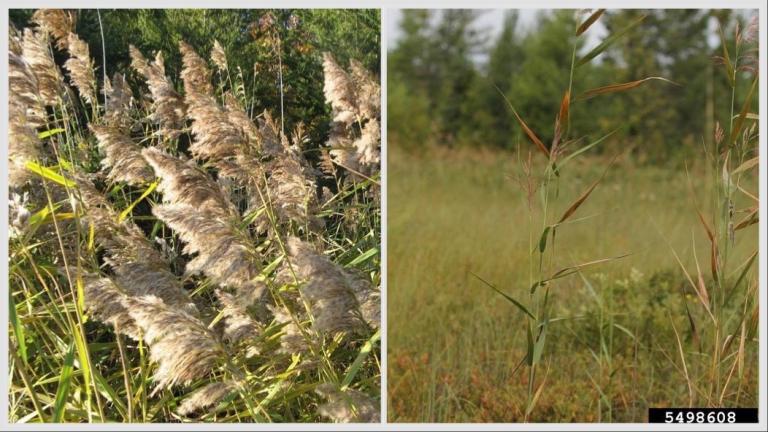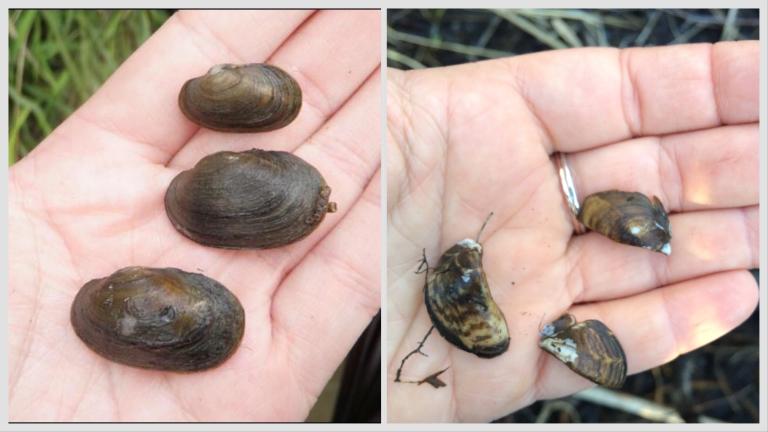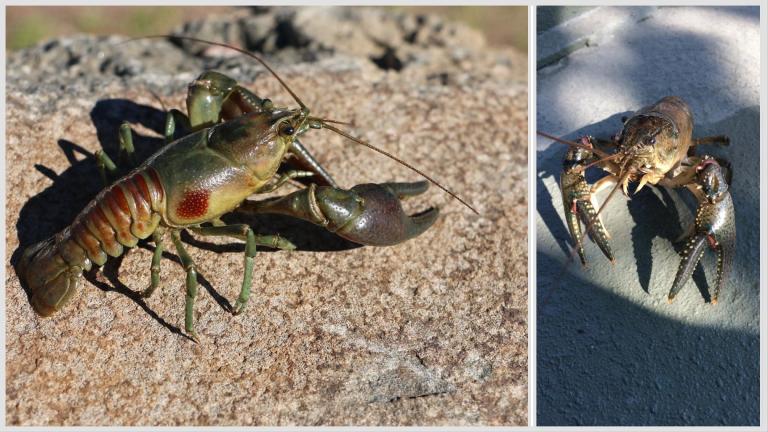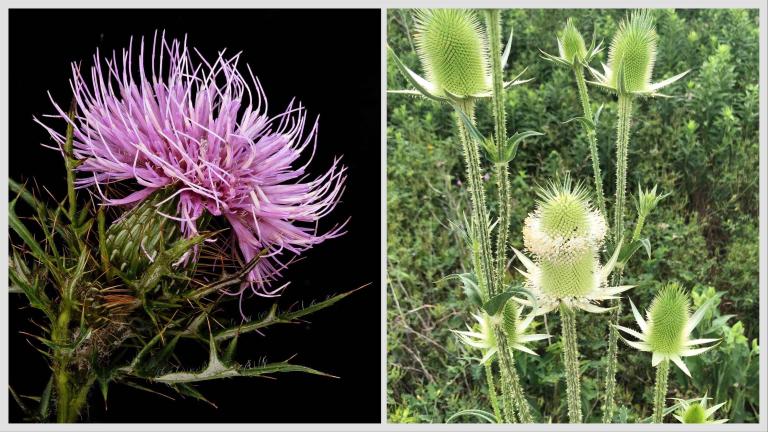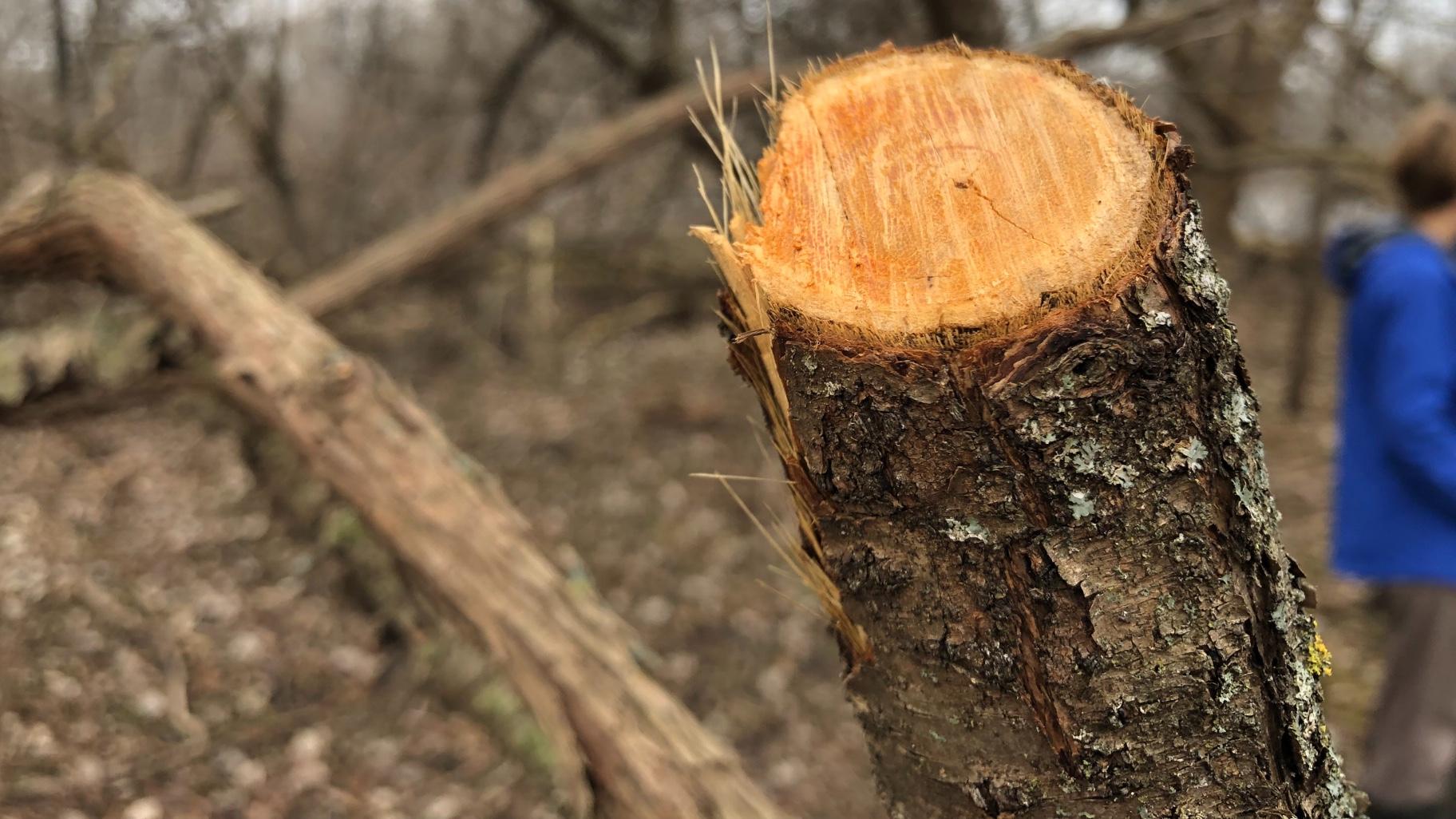 Buckthorn's telltale sweet potato color, exposed. (Patty Wetli / WTTW News)
Buckthorn's telltale sweet potato color, exposed. (Patty Wetli / WTTW News)
European (or common) buckthorn is the bane of many a Chicago naturalist's existence.
Brought to the U.S. as an ornamental back in the early 1800s, the plant has long since escaped the boundaries of cultivation or intentional use. Now listed as an invasive species, buckthorn has come to "dominate ecosystems and displace native species," according to the U.S. Department of Agriculture.
In habitat restoration projects across the region, getting rid of buckthorn is often the first step toward ecosystem recovery. But what exactly does the stuff look like?
There's a simple hack that doesn't require a degree in botany, and is particularly helpful in winter when leaves are long gone: Scratch below the surface, and buckthorn gives itself away.
It's sweet-potato orange.
Here's a demonstration from Christopher Riccardo, conservation action facilitator for the Shedd Aquarium, during a recent volunteer work day held at Skokie Lagoons.
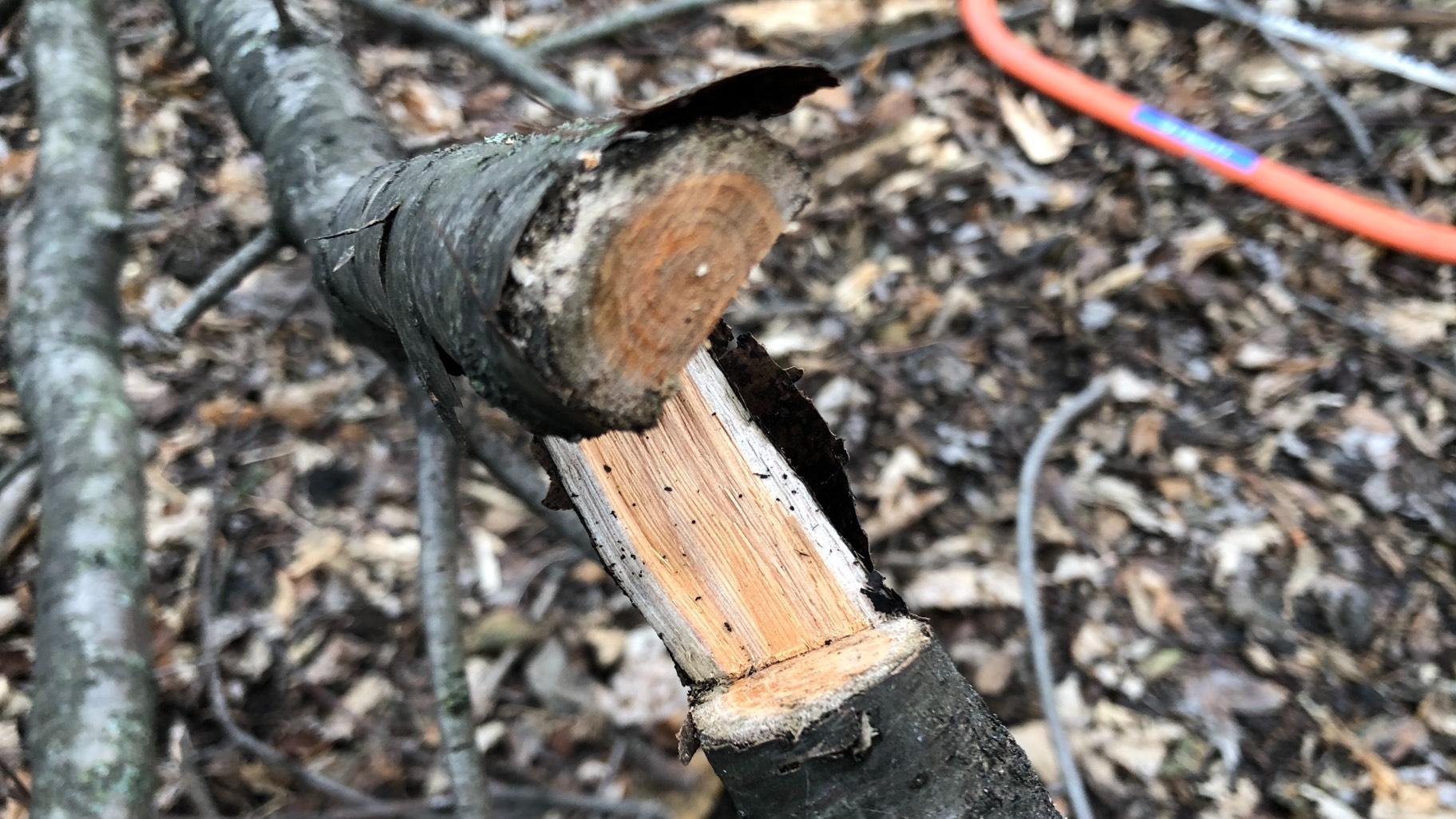 Buckthorn's telltale sweet potato color, exposed. (Patty Wetli / WTTW News)
Buckthorn's telltale sweet potato color, exposed. (Patty Wetli / WTTW News)
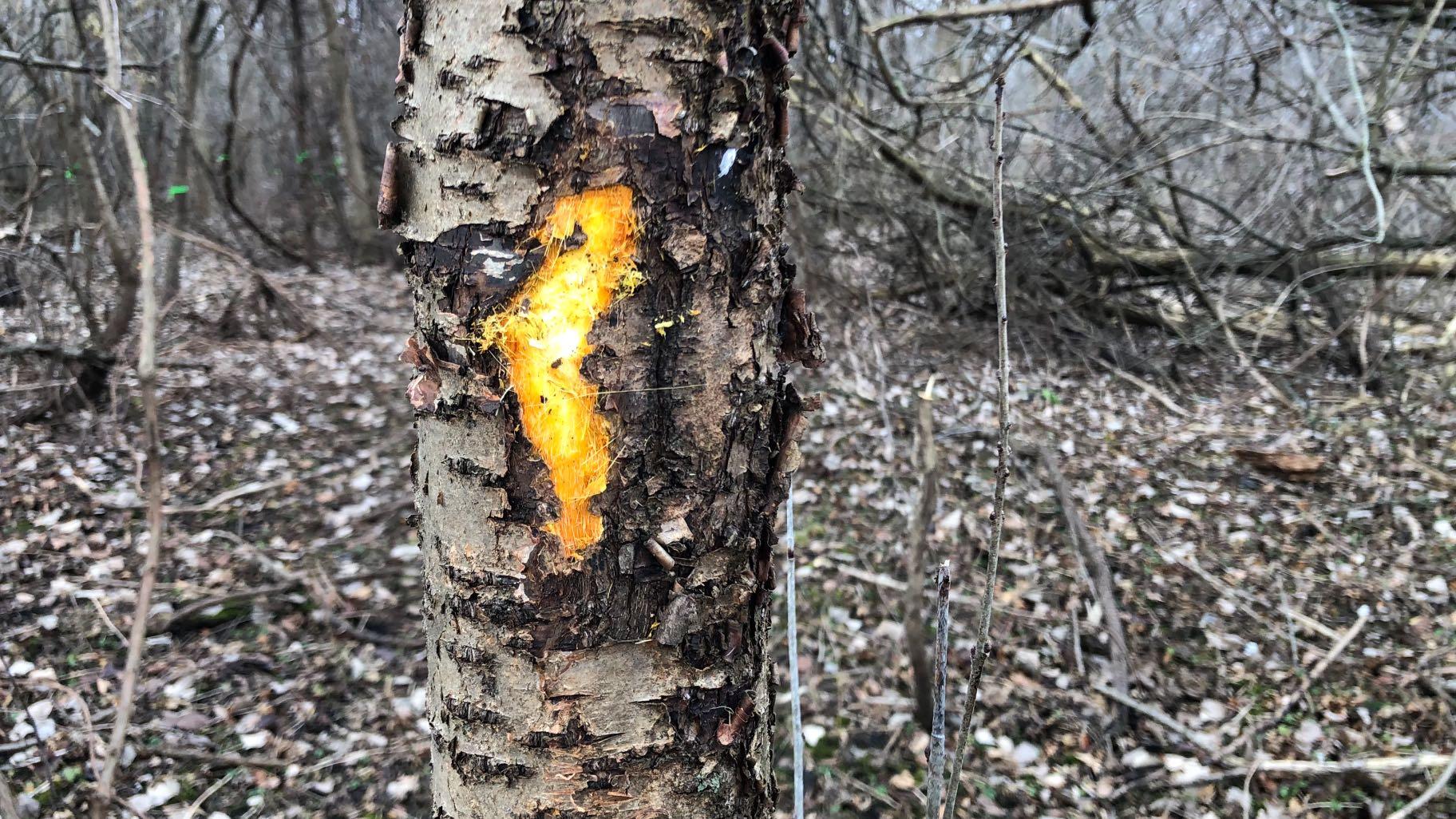 Buckthorn's telltale sweet potato color, exposed. (Patty Wetli / WTTW News)
Buckthorn's telltale sweet potato color, exposed. (Patty Wetli / WTTW News)
Contact Patty Wetli: @pattywetli | (773) 509-5623 | [email protected]

